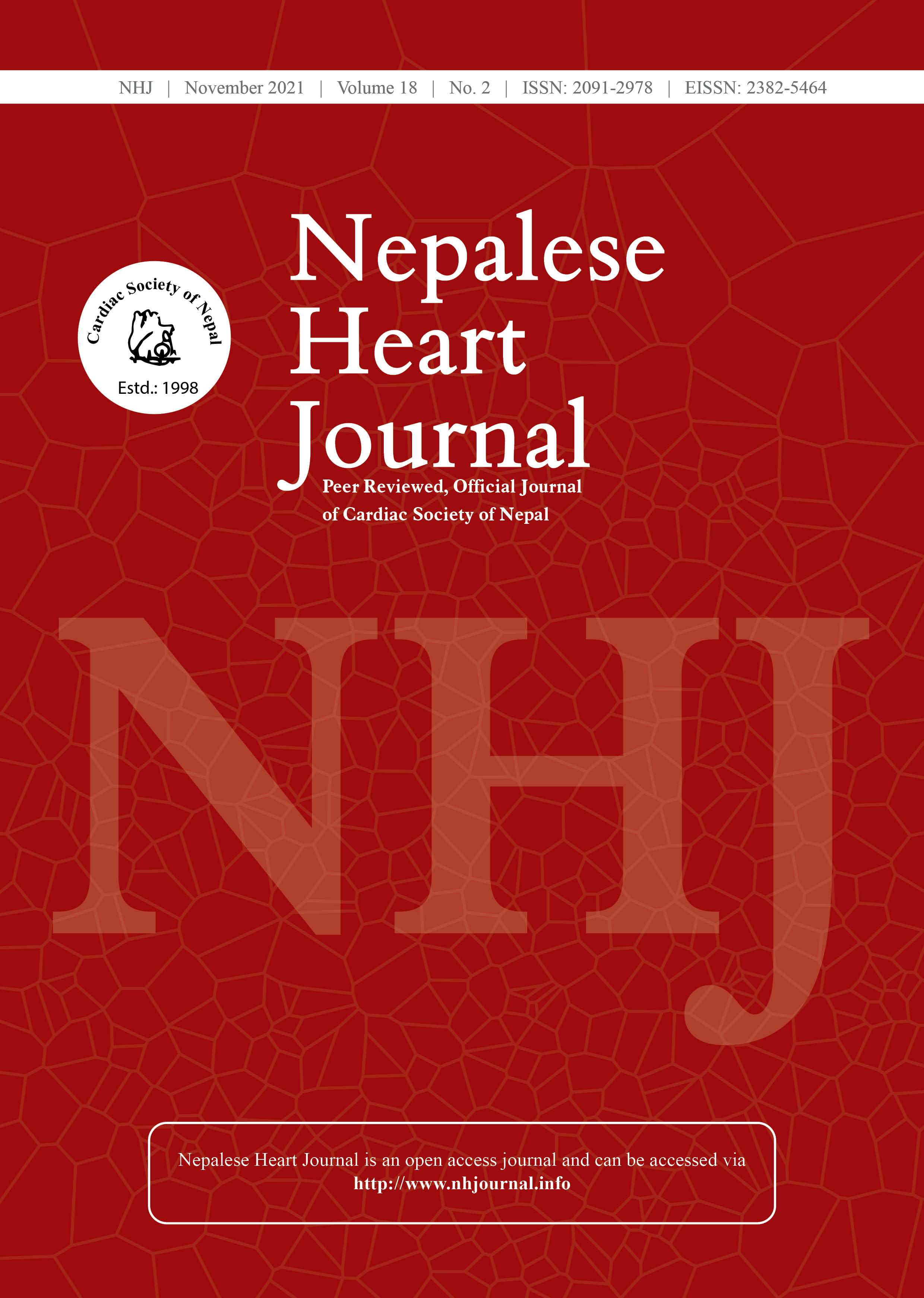Prognostic value of frontal QRST angle and in hospital outcome in ST- Segment Elevation Myocardial Infarction patients undergoing primary percutaneous coronary angioplasty
DOI:
https://doi.org/10.3126/njh.v18i2.40396Keywords:
acute ST elevation myocardial infarction, frontal QRST angle, In-hospital Mortality, primary percutaneous coronary angioplastyAbstract
Background and Aims: Frontal QRS-T angle has been previously correlated with long term mortality in ST-segment elevation myocardial infarction patients. This study aimed to investigate the prognostic value of frontal QRS-T angle and in-hospital outcomes in the setting of ST-segment elevation myocardial infarction patients undergoing primary percutaneous coronary intervention.
Methods: We evaluated 97 consecutive patients presenting to the emergency department of Shahid Gangalal National Heart Centre with chest pain of less than 12 hours duration, who were subsequently diagnosed as ST-segment elevation myocardial infarction in a prospective observational study. The study was conducted from July 2020 to June 2021.The data evaluation included demographics, clinical variables, electrocardiogram, length of hospital stay and in hospital mortality. Patient outcomes were stratified into three groups according to frontal QRS-T angle. The relationship between mortality and frontal QRS-T angle was tested with chi-square test. The p-value across the groups was again tested for inter-group significance.
Results: Out of 97 patients 67 (69.07%) were male and 30 (30.92%) were female., The mean age of study population was 55.8±11.8 years. The patients under study were divided into three groups based on the calculation of fQRST angle as Group 1 (0-45°) being 46(47.4%), Group 2(46-90°) being 20(20.6%) and Group 3 (>90°) with 31(32%) cases. Diabetes and Congestive heart failure (CHF) patients were more likely to have increase in frontal QRST angle (P value 0.029, 0.012 respectively). Atrial fibrillation (AF) was higher among patients in group 3(>90° frontal QRST angle) which was statistically significant (0.012). Although the mean length of hospital stay was higher among patients with highest frontal QRST angle, it was statistically insignificant (p Value 0.062) however, the chance of hospital stay durations significantly increases across three groups at a 5% significance level (p-value: 0.018). In hospital mortality increased with increase in frontal QRST angle with 8.7%, 15% and 22.6% in group 1, 2 and 3 respectively however it was statistically insignificant.
Conclusion: Diabetes, CHF and AF patients were more likely to have increase in frontal QRST angle. The chance of hospital stay duration significantly increases with increase in frontal QRST angle Although the in hospital mortality increased with increase in the frontal QRST angle, it was statistically insignificant. A prospective study with larger sample size will help to clarify its association.
Downloads
Downloads
Published
How to Cite
Issue
Section
License
Copyright (c) 2021 Nepalese Heart Journal

This work is licensed under a Creative Commons Attribution 4.0 International License.
This license enables reusers to distribute, remix, adapt, and build upon the material in any medium or format, so long as attribution is given to the creator. The license allows for commercial use.




